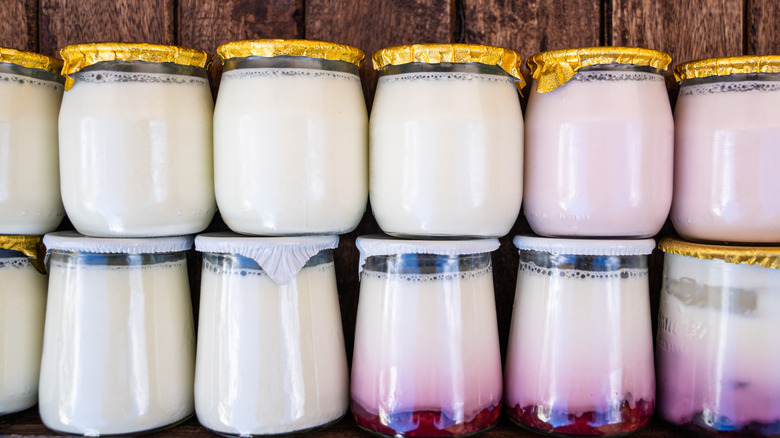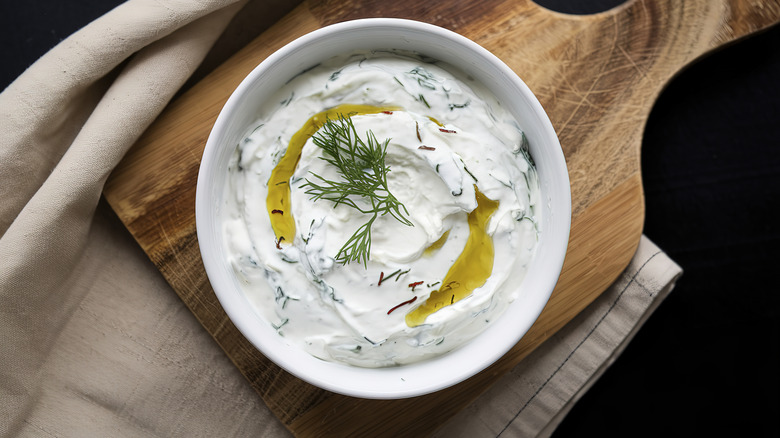What Makes French Yogurt So Different From Greek
We may receive a commission on purchases made from links.
Yogurt, when defined at its broadest, is simply a dairy product produced by bacterial fermentation. Heated milk is treated with Lactobacillus bulgaricus and Streptococcus thermophilus (you can even make yogurt at home in a slow cooker), transforming it into something tangy and thick, with a longer lifespan than ordinary milk. Yogurt has many sub-varieties worldwide, giving it universal appeal from Armenia to Iceland and Turkey to India.
Two readily available types of yogurt we can pick up at the supermarket are French and Greek, but because that wall of dairy choices tends to be so big, it can start to get a little confusing as to which type to pick. French yogurt is defined by how it's made. While most yogurts are made in large batches and distributed to smaller containers, French yogurt is fermented in its own individual serving glass. However, the base ingredients are still the same as most types, giving you a thick yogurt that's not as tangy as other varieties and is lightly sweet.
One key difference between French and Greek yogurt is straining. Excess liquid from Greek yogurt is drained away, leaving you with a much thicker end product. Labneh, the Middle Eastern version, is strained even further.
When to use French or Greek Yogurt
One supermarket brand of French yogurt that you'll frequently see is Yoplait's Oui, which comes in single-serving glass jars, and all in sweetened varieties. These range from fruit flavors to chocolate ones, and they're really meant as a ready-to-eat snack to pull out whenever you want a bit of dessert. While it can also be sweetened, Greek yogurt is popular plain with varying fat percentages, which makes it a great cooking component for savory dishes.
You can use Greek yogurt in things like sauces (it's the main component in tzatziki sauce), or you can just use it plain as a condiment to whatever you like. I tend to sub it in for places that call for sour cream; though it's rich and creamy, you'll have to keep in mind that it does have a tangier flavor profile. You can also use Greek yogurt in baked goods, soups, marinades (the lactic acid in it acts as a tenderizer), and it's pretty much an ingredient you can work into things you want a boost of dairy.
For those who seek a high-protein diet, Greek yogurt is also notably high in protein since the liquid drained from it concentrates the solid nutrients that are left. You can use plain yogurt as a base for do-it-yourself bowls dressed with fruit, granola, or honey — I'm a fan of Fage Greek Yogurt for its richness and texture. There's no doubt that both French and Greek yogurt are good; it's just knowing which to pick and for when.

